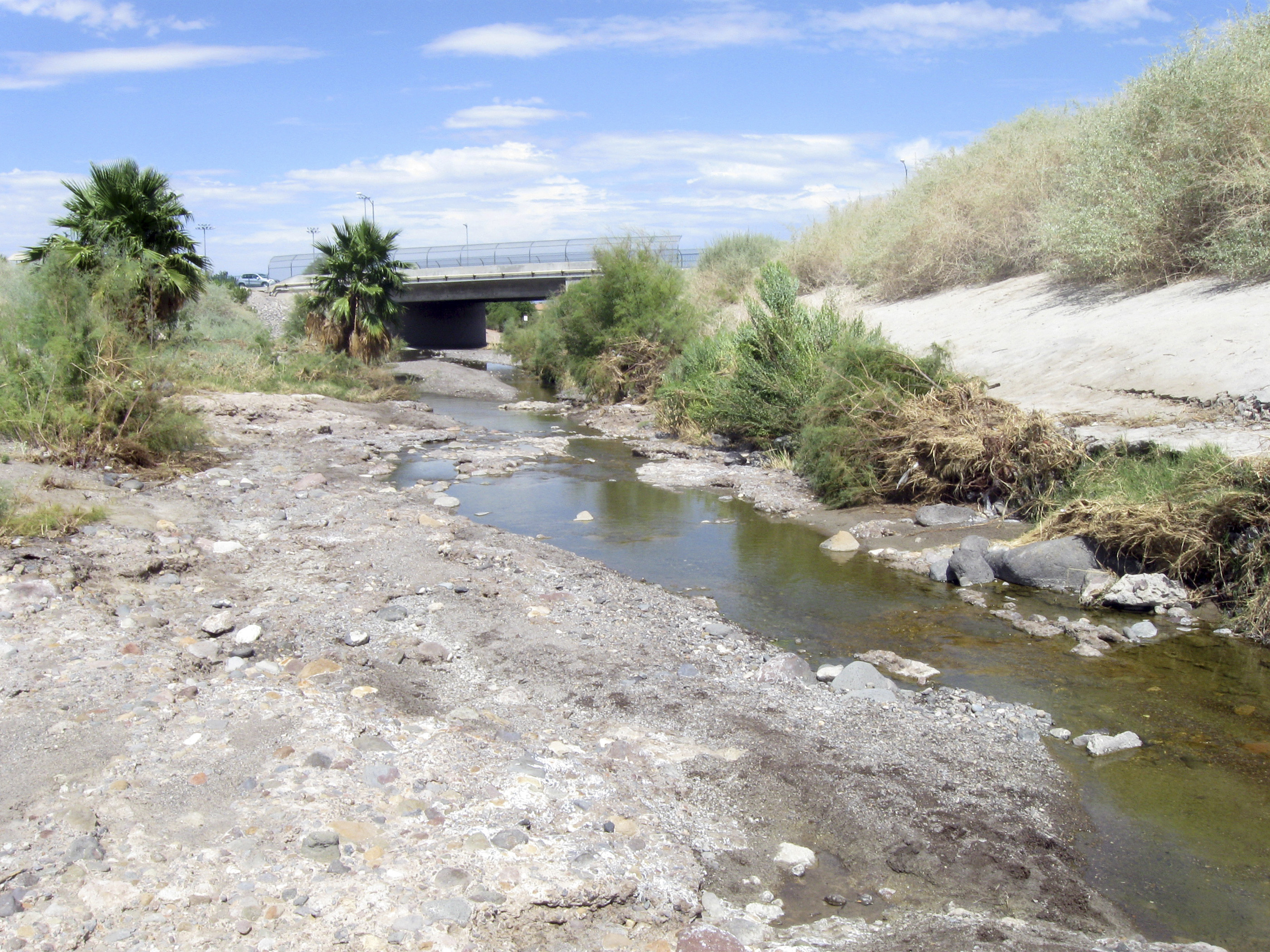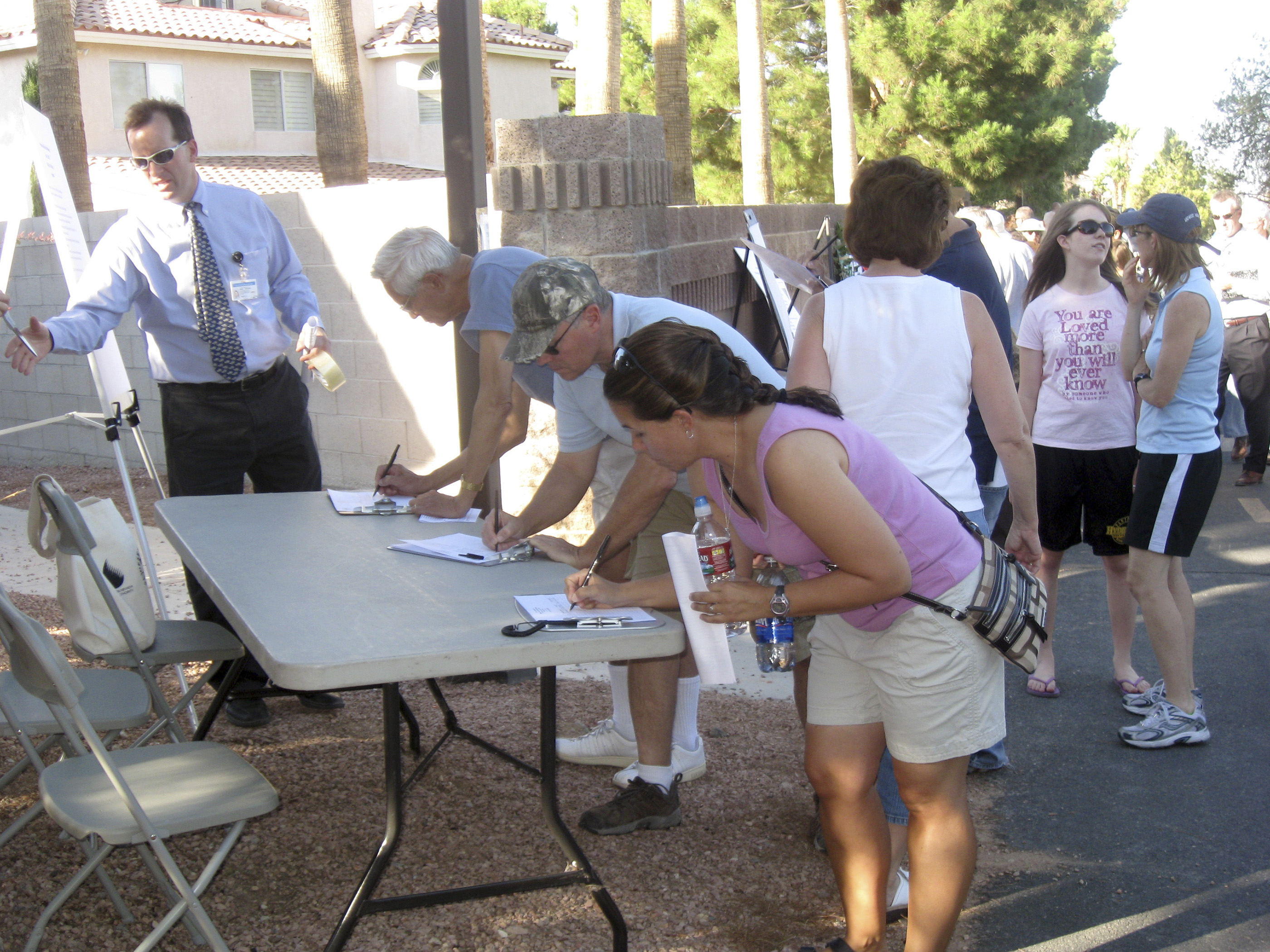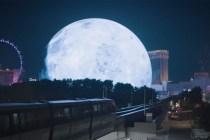Pittman Wash flood control project divides Henderson officials, environmenalists
The relationship between the city of Henderson and Project Green Valley Ecology, Environment and Nature: Friends of Pittman Wash, has been tested as the two entities debate the necessity of putting a 40-foot wide, 10-foot deep concrete channel at the bottom of the wash.
In the past, both entities shared the goal of seeing Pittman Wash thrive as a natural habitat.
However, the wash, which is sandwiched between two housing developments, has a natural stream that has caused erosion . The city thinks the best solution to correct that problem is to construct a $4.5 million channel .
Kathleen Richards, public information officer with the city, said only a 1,800-foot section of the wash, between Santiago Drive and the Union Pacific Railroad would be affected. City officials are concerned that a 100-year flood could cause further danger to the area.
"There is a 1 percent chance that a 100-year storm will hit any given year," Richards said.
But Project GREEN disagrees .
"This is overkill," said Evelyn Gajowski, vice president of Project GREEN. "You don't need a half-mile-long concrete channel. Just fix the few spots that have erosion problems instead of wiping out an entire ecosystem and spending $4.5 million to do it."
Members of Project GREEN spoke to the City Council at the May meeting, urging the city to reconsider the project.
Both sides set up booths with information and photos at a July 13 meeting on the Pittman Wash Trail near Arroyo Grande Boulevard.
"It was like a husband and wife talking pass each other," said Tim Kelly, a runner who frequents the trail and opposes the project. "They came out to tell us why it is a great project, and we came out to say why we disagree. I'm not sure if they are hearing us anymore than we are hearing them."
According to Richards, the city has looked at many alternatives to fix the problem, including riprap lining, which uses large rocks or concrete rubble to stabilize the stream; drop structures, which are man-made spillways that drop the water from a higher elevation to a lower elevation and slow the velocity of water flow; and adding vegetation, which is a natural way to control the erosion.
"But those won't work," said Robert Herr, assistant director of public works.
The city said that riprap, which currently is used in the wash, doesn't work because storm waters tend to wash the rocks downstream; drop structures won't work because the wash is "too narrow and steep" and would require "extensive re-grading to flatten the longitudinal slopes" that would not be feasible because of the depth of the channel; and vegetation is not feasible because the potential velocity of water from a flood is too much for the vegetation to withstand.
Gajowski doesn't think all the options have been exhausted.
"They didn't start looking at alternatives until we approached the council in May," Gajowski said. "Anything we suggested they have thrown out on the fly without doing any study."
Other options Project GREEN has offered include an articulated concrete block, which is a mat installed on the banks and bottom of the channel that would work with vegetation to slow water velocity and prevent erosion; or a smaller concrete or gabion channel that would carry seasonal flows and allow maintenance access "but would not contain a theoretical 100-year flood."
Gajowski said residents also are weighing in on the issue. A petition with more than 700 signatures, along with phone calls, emails and faxes, has been sent to city officials.
"There are more than two perspectives to this issue," Gajowski said.
Kelly says he thinks city officials are wrong about the wash not being secure during a 100-year flood.
"I don't trust the science," Kelly said. "I love the city, but I think they are wrong on this instance."
Lisa Carver, another resident and an avid trail user, opposes the proposal because she said it would get rid of the natural beauty of the wash. "There are very few natural habitats like this," Carver said. "This is a place where people come to get rid of stress. And to pour concrete in there is just taking away a natural place we go to. I hope they can find a happy medium where they don't have to throw concrete down there, w here they can do what they have to without getting rid of that beauty."
But Gajowski said there is another party affected.
"We speak on behalf of the wildlife, as corny as it might sound," Gajowski said.
Project GREEN fears the concrete channel would have a devastating effect on the eco system at the bottom of the wash that includes plant life and a natural spring.
Mark Van Der Puy, a former hydrologist who has worked in Las Vegas since 1979, spoke on behalf of Project GREEN and said the natural spring is a rarity to Las Vegas and should be preserved.
"This is a rare resource," Van Der Puy said. "We need to do what we can to not pour concrete on top of it."
Richards said the city has every intention of preserving as much of the natural environment and that the concrete-lined channel is the least environmentally damaging result.
Herr said the next step is to bring all related data before the council members and have them give their final input on the situation .
The project would be paid for by the Clark County Regional Flood Control District.
Contact Henderson and Anthem View reporter Michael Lyle at mlyle@viewnews.com or 387-5201.













